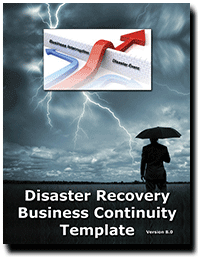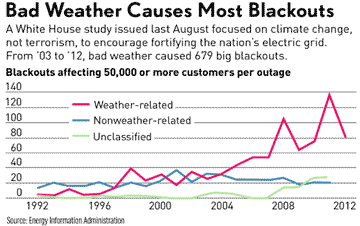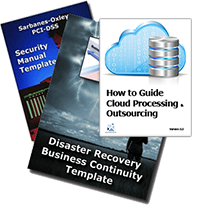Blackouts are a Fact of Life - They Will Occur
A power grid failure is one of the things that DR BC planning needs to consider
 At a high level, the power grid is a very concept that is easily understood. It consists of a set of large power plants (hydro-power plants, wind farms, solar panel farms, nuclear power plants, etc. ) all connected together by wires. One grid can be as big as half of the United States.
At a high level, the power grid is a very concept that is easily understood. It consists of a set of large power plants (hydro-power plants, wind farms, solar panel farms, nuclear power plants, etc. ) all connected together by wires. One grid can be as big as half of the United States.
A grid works very well as a power-distribution system because it allows a lot of sharing. If a power company needs to take a power plant or a transmission tower off line for maintenance, the other parts of the grid can pick up the slack. However that also is the greatest risk as weather can impact on part of the grid that can the trickle down and impact the rest of the grid.

Power Grid Failure
Assume the grid is running pretty close to maximum capacity. Something causes a power plant to suddenly trip off line. The "something" might be anything from a serious lightning strike to a geomagnetic storm to a bearing failure and subsequent fire in a generator. When that plant disconnects from the grid, the other plants connected to it have to spin up to meet the demand. If they are all near their maximum capacity, then they cannot handle the extra load. To prevent themselves from overloading and failing, they will disconnect from the grid as well. That only makes the problem worse, and dozens of plants eventually disconnect.
In Janco's opinion it is imperative that business continuity professionals consider the temporary loss of the power grid due to a flood or other weather related event and develop a disaster recovery business continuity plan to meet the requirements to deal with this type of incident.
Order DRP BCP Template Sample DRP BCP Template
Many organizations simply do not have the luxury of being able to move to an alternative recovery site following a power grid failue. In these cases disaster recovery plans should include a cloud solution, external expert support of a specialist company that will aid the internal recovery and incident team to mitigate against secondary damage, administer triage to the affected areas and expedite the correct equipment, methods and manpower to restore their facility as quickly as possible to a suitable working environment, so that service can be resumed.
Speed of response is vital
in order to reduce the level of disruption and physical secondary damage; and to limit the time in which function is lost. Dealing with an incident within the first few hours may reduce the total time of the disruptive event by weeks.
Many blackouts come with extended periods of UNKNOWN recovery. The worst part of these event is NOT KNOWING when the power would be restored. This facilitates confusion on whether or not to declare a disaster or not.
Some Disaster Recovery / Business Continuity and data backup plans address 4 areas:
- Protect the data EXISTENCE with tape or off-site backup plans;
- FAILOVER or REDUNDANT servers/services; and/or
- LONG TERM Disaster recovery plans that planned for a KNOWN long term outage.
- Cloud recovery services
Given that power restoration is often unknown, it is unclear whether declaration of long term disaster should be declared. A lot of these long term outage plans require multiple day turn around for getting services back up and running either at hot sites or other locations. Waiting for power to come back in a day or two would mean your business would be down for longer than necessary.
Order DRP BCP Template Sample DRP BCP Template




